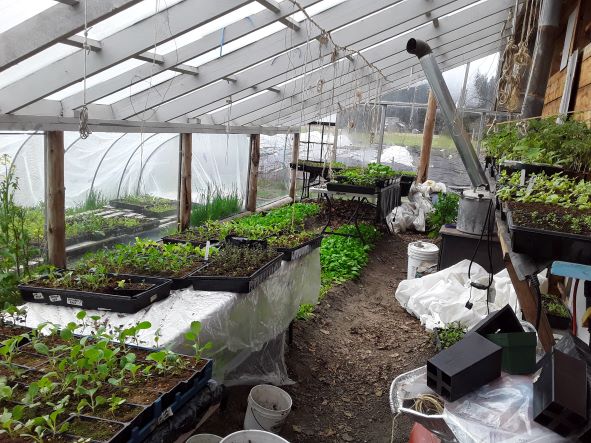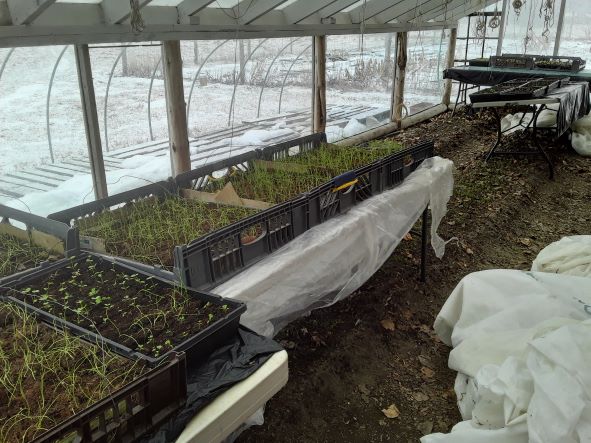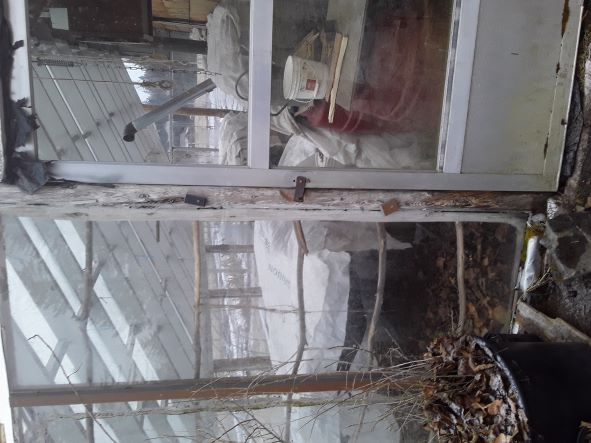Spring Greenhouse Tips for Successfully Growing Starts
What has worked for me...
I am always interested in new tricks :)
In a previous post I gave general dates for planting starts in the spring and tips on watering. Over or under watering starts is one of the most common problems with starts failing.

Overwatering can cause seeds to rot or cause fungal growth in the soil that can lead to Damping-off where the stem of the seedling rots. This is common in the cool and wet conditions of spring in the North. Keeping soil moist but not waterlogged is key. Once seeds have sprouted soil can be a little drier than while trying to get seeds to germinate. Damping off can be particularly problematic with seeds like onions that take a long time to germinate.
Underwatering can cause the soil to dry out and seeds will thus not germinate or there may be very low, spotty germination. The utilization of heat mats can cause soil to dry out much faster and because the soil is drying out from the bottom up to the surface it can be harder to notice that your flats of seeds or starts are not getting enough water.
Typically once my seeds have germinated I water less allowing soil to become a bit dry. I also try to focus my watering in the morning to mid-day and less so at night so soil is not sitting overly wet during the cool hours of the night.
Another very common problem is inadequate light which causes seedlings to be leggy. LED plant lights that can be raised as plants grow are a great way to get adequate light to your seedlings.
My preference is always to put plants out in a greenhouse as soon as possible as nothing can compare with natural light. And admittedly I seem to just not have a knack for growing plants indoors, the sooner I can get plants outside the more successful my plants grow. Natural light and temperatures prevents leggy, spindly, and weak plants

Hacks to get your plants out to a greenhouse sooner:
Water as a Heat Sink. Along the back wall of our greenhouse we have barrels of rainwater that fill passively from our greenhouse roof and then we use this to water our plants. Almost the entire back wall of our greenhouse is lined with 5 gallon containers of water. These stay in our greenhouse year round helping to moderate the temperature in the greenhouse.

Heat Mats: My system is to utilize shelves and folding tables in my greenhouse for flats that I want to keep at a certain temperature with heat mats. I lie down a piece of rigid foam, then my heat mat, and then my flat of plants on top of that. I always use a thermostat with my heat mats. In this way can keep warm weather starts like basil, tomatoes and cukes on one heat mat at a temperature of 70F or more, while keeping flowers or brassicas on a heat mat whose temperature I set at 68F.

I personally have an aversion to the rigid plastic covers that are used to cover seedling flats. I personally feel that airflow is far more important to healthy plants and encasing them in plastic has just never worked for me. If you are going to us plastic covers I suggest that you don’t buy these silly things, you can just utilize clear pieces of plastic that you already have lying around. I have used clothespins to hold the plastic in place off of the soil. If you do buy plastic covers, I recommend vented ones.
Row Cover: I use row covers in my greenhouse to cover flats during cool days and nights. Row covers will help keep heat from the heat mat concentrated near my flats yet allow air flow and light to reach my plants.. On a cool cloudy day I may keep one layer of row cover over my plants. On clear days I will take the row cover off so my plants get maximum sun and airflow. On cold clear nights I may put 2 layers of row cover, or row cover then covered by a tarp over my plants for maximal heat retention. I use sticks, water jugs, any kind of props to keep row covers off my plants and soil in the flats as even light row cover can crush a seedling or encourage more fungal growth on soil.

Ventilation: Ventilating a greenhouse is always important. All life needs fresh air, right! We utilize both passive opening vents, fans, and prop open a door. By May we utilize all 3 of these simultaneously.
